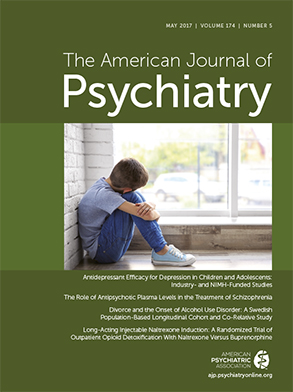T
o the E
ditor: The timely study by Przybylski and colleagues (
1), published in the March 2017 issue of the
Journal, found that DSM-5 criteria for Internet gaming disorder were psychometrically sound across four large North American and European samples. Prevalence estimates ranged between 0.3% and 1.0%. The authors suggest previous studies may have overestimated the prevalence and health effects of Internet gaming disorder. However, findings should be interpreted with caution.
As mentioned in the article (
1), most previous studies of Internet gaming disorder involved convenience samples, which may limit generalizability and exaggerate severity of Internet gaming disorder. Przybylski and colleagues (
1) used two Internet survey tools to sample a dispersed population, but questions exist regarding the representativeness of the approach. Individuals with symptoms of Internet gaming disorder may resist participating in voluntary surveys, possibly leading to an underestimation of the prevalence of Internet gaming disorder. Consistently, higher prevalence estimates have been reported elsewhere (e.g., 0.2% in the article [
1] compared with 1.16% for German adolescents in a separate study [
2], although age effects and other differences warrant consideration). Moreover, other studies suggest that males more frequently experience Internet gaming disorder and spend more time Internet gaming than females (
2), but three out of four samples in the article by Przybylski et al. did not show such patterns; thus, possible sampling biases exist, although other factors (e.g., changing demographics) warrant consideration.
The article indicated that DSM-5 criteria for Internet gaming disorder are psychometrically sound, with the nine criteria contributing equally to the diagnosis of Internet gaming disorder. This conclusion appears based on applying Rasch modeling to the whole sample, in which most subjects did not acknowledge any Internet gaming disorder criteria. Other studies using different methodologies suggest that the nine criteria may contribute differentially to Internet gaming disorder (
2). Thus, it appears important to evaluate the psychometric properties of the DSM-5 criteria through multiple approaches. In addition, when assessing the effect of Internet gaming disorder, additional measures (e.g., of depression) and thresholds are worth evaluating, particularly as Internet gaming disorder is set at a more stringent threshold than that of other addictive disorders.
Internet gaming disorder appears to have a strong impact in Asian countries (
3). Although the authors acknowledge potential cultural differences (
1), specific factors warrant consideration. For example, addictive substances and gambling are typically under strict regulation or are prohibited in Asian jurisdictions, which may influence the salience and severity of Internet gaming disorder.
Additional studies should investigate the prevalence and effects of Internet gaming disorder beyond North America and Europe. The World Health Organization has been considering Internet-use behaviors and disorders for ICD-11. This process has included participants from six continents (including from Asian jurisdictions) and has considered diverse online behaviors (e.g., gaming, gambling, social networking, and pornography viewing, among others) (
https://gcp.network/en/). In rapidly changing digital technology environments with variations in digital penetrance, regulations, and cultures worldwide, it is important to collect additional data to gauge related health effects across the globe.

